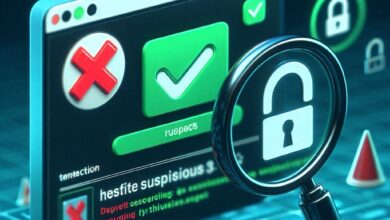Empowering Employees with Knowledge through Phishing Scans

In today’s digital age, the security landscape of organizations is continuously challenged by cyber threats, among which URL phishing remains a significant concern. A URL phishing scan is an essential tool in the arsenal of cybersecurity measures, aimed at identifying malicious websites that are designed to deceive employees into divulging sensitive information. Empowering employees through knowledge and regular scans can drastically reduce the vulnerability of an organization to these attacks.
Phishing attacks typically involve the creation of fake websites that closely mimic legitimate ones. These sites are then linked to emails or messages that try to lure employees into entering confidential data such as login credentials, personal information, or financial details. The consequences of falling prey to such schemes can be dire—ranging from financial loss to severe reputational damage. Thus, educating employees on the importance of phishing scans is not just beneficial; it is imperative for the safeguarding of company assets.
A comprehensive approach to empower employees involves several strategic steps. The first step is the implementation of regular URL phishing scans across all organizational digital touchpoints. These scans are designed to detect suspicious links and domains that might be used in phishing attempts, providing a proactive means to curb potential breaches.
Education is the next critical layer of defense. Training programs should be established to help employees recognize the signs of phishing attempts. Workshops and seminars can be effective in illustrating common tactics used by cybercriminals, such as urgent language in emails or slight misspellings in URLs which may not be immediately obvious. Interactive sessions that simulate phishing scenarios are particularly beneficial as they allow employees to experience firsthand how phishing attempts might appear in their work environment.
Another vital component is the creation of clear and concise reporting protocols. Employees should be encouraged and empowered to report suspicious emails or websites immediately. A culture that promotes open communication regarding cybersecurity concerns can significantly enhance an organization’s ability to respond swiftly to potential threats. Management teams should prioritize these reports and act promptly to mitigate any risks associated with reported content.
Moreover, the integration of advanced technological tools to supplement employee training can provide an additional layer of security. These tools can range from email filters that block known phishing domains to browser extensions that alert users of suspicious websites. While technology alone cannot completely prevent phishing attacks, when combined with well-informed employees, it significantly strengthens an organization’s defensive posture.
Regular audits and updates of cybersecurity policies and tools should also be part of the empowerment strategy. As cybercriminals evolve their tactics, so too should the methods to counteract them. Keeping cybersecurity measures up-to-date ensures that both the technological and human elements of the defense strategy are equipped to handle new types of phishing schemes.
Finally, recognition and incentives for vigilant behavior can reinforce the importance of cybersecurity within the organizational culture. Employees who demonstrate acute awareness and proactive behavior in identifying and reporting threats should be acknowledged. This not only boosts morale but also encourages others to exhibit similar vigilance.
In conclusion, empowering employees with the knowledge of URL phishing scans and other cybersecurity practices is fundamental to fortifying an organization against cyber threats. A well-rounded approach that includes education, technological support, proactive measures, and a supportive culture can transform employees from potential victims to informed defenders of their digital domain. Through continuous education, practice, and engagement in cybersecurity, organizations can not only prevent phishing attacks but also build a more secure and resilient digital infrastructure.



